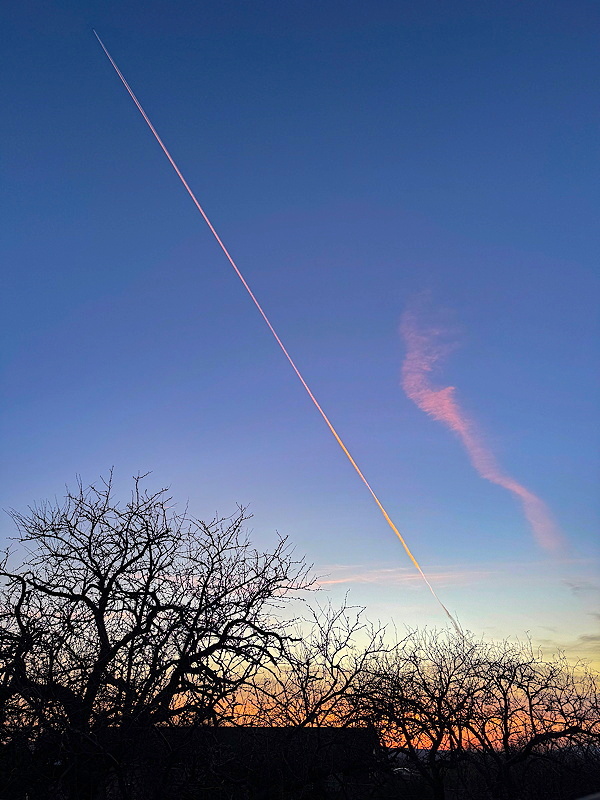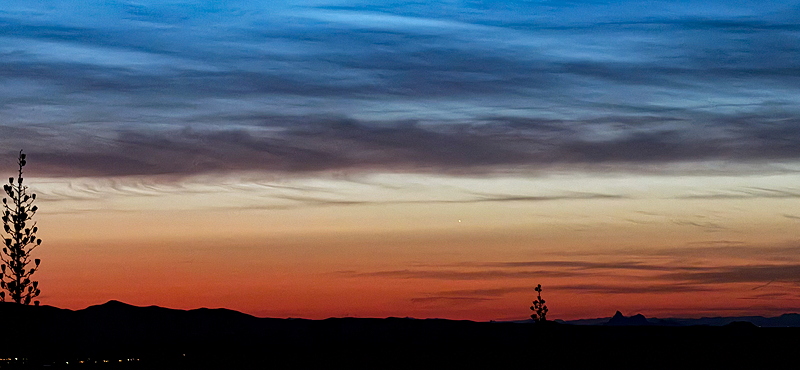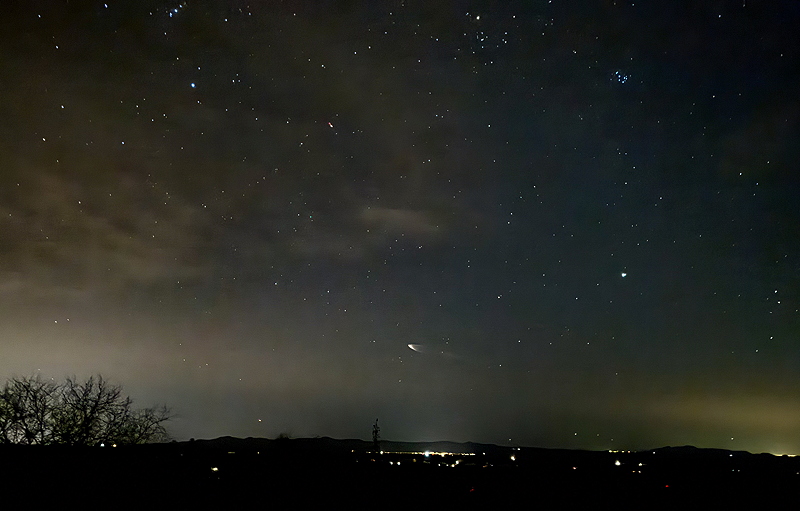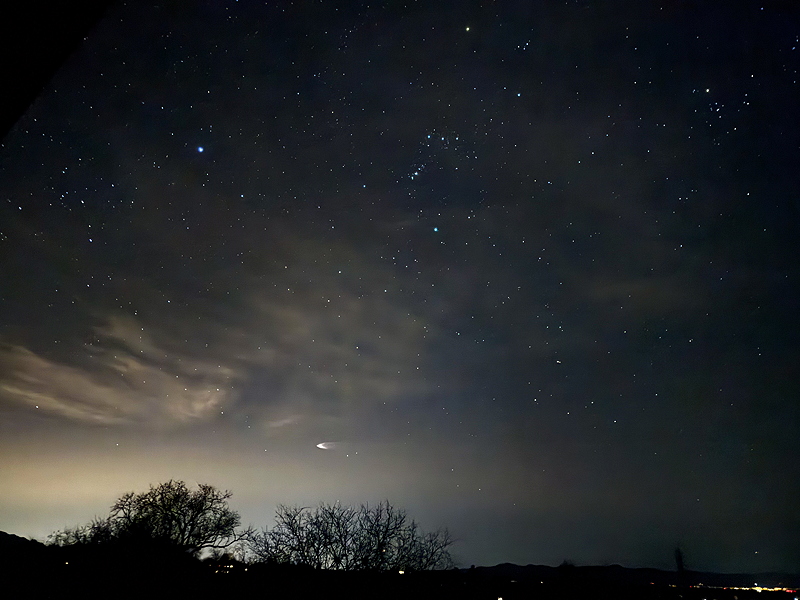Mercury, SpaceX Rocket Launch
Posted: 11 March 2024
The sky was cloudy on Tuesday, 5 March 2024. With rain in the forecasts, Wednesday morning, 6 March, I put the Dome Cover ON. The rain arrived Thursday afternoon, 7 March, with a total for the day of 0.36". There was more rain (0.41") Friday, 8 March. Saturday, 9 March, dawned with a clear sky. That night I attended the 9th Anniversary International Dark Sky Park Celebration and Star Party at Oracle State Park. With a clear night forecast for Sunday, 10 March, that morning I removed the Dome Cover. That afternoon I had planned to do a photography dry run in preparation for the 8 April Total Solar Eclipse, but like the last time I had planned to do the dry run, it was too windy.
|
Open: Sunday, 10 March 2024, 1806 MST Temperature: 73°F |
Session: 1947 Conditions: Mostly clear |
Equipment:
12" f/8 LX600 w/StarLock
2" 24mm UWA eyepiece
12x50 binoculars
Camera:
iPhone 15 Pro Max
I hoped to see and photograph the 17 hour old crescent Moon shortly after sunset, but clouds low along the western horizon would likely prevent it.
1812 MST: LX600 ON, StarLock OFF, High Precision OFF.
1826 MST: Viewed Jupiter, 102X. No moon visible in the bright sky.
1830 MST: Sunset.
Relaxed on the observatory patio bench for awhile. Saw this jet airliner contrail.

1841 MST: There were now clouds in the western sky where the Moon was.
1848 MST: Back in the observatory I slewed the telescope to the Moon. It was behind trees and clouds. I moved to higher ground where I had a nice clear view of the western sky.
1858 MST: Using 12x50 binoculars, I spotted Mercury in the western sky through thin clouds. This iPhone 15 Pro Max photo was taken at 1909 MST using the Camera app (1X lens, slightly cropped).

Mouseover or tap on image for label
The 17 hour old Moon was just below and left of Mercury, but I never saw it nor was it visible in any of my photographs due to the clouds.
1914 MST: Gave up on seeing the Moon since it was setting. I returned to the observatory.
1919 MST: Viewed Jupiter and the four Galilean Moons, 102X.
Due to the increasing clouds, decided to end the session.
1920 MST: LX600 OFF.
|
Close: Sunday, 10 March 2024, 1928 MST Temperature: 57°F |
Session Length: 1h 22m Conditions: Partly cloudy |
Although it had been originally scheduled to launch at 1913 MST, a SpaceX Falcon 9 rocket launched from Vandenberg Space Force Base at 2109 MST. I took these iPhone 15 Pro Max photographs using the Camera app (Night Mode, 3 seconds, 1X lens). The top photo shows the second stage firing (center bottom) with the Pleiades and Hyades star clusters at the upper right. The second photo shows the second stage continuing to fire with the constellations of Canis Major at the left and Orion at the top.
2114 MST

2116 MST

Comments are welcome using Email. Please read the Email Etiquette guidance.
Cassiopeia Observatory Home Page
Copyright ©2024 Michael L. Weasner / mweasner@mac.com.
URL = http://www.weasner.com/co/Reports/2024/03/11/index.html
